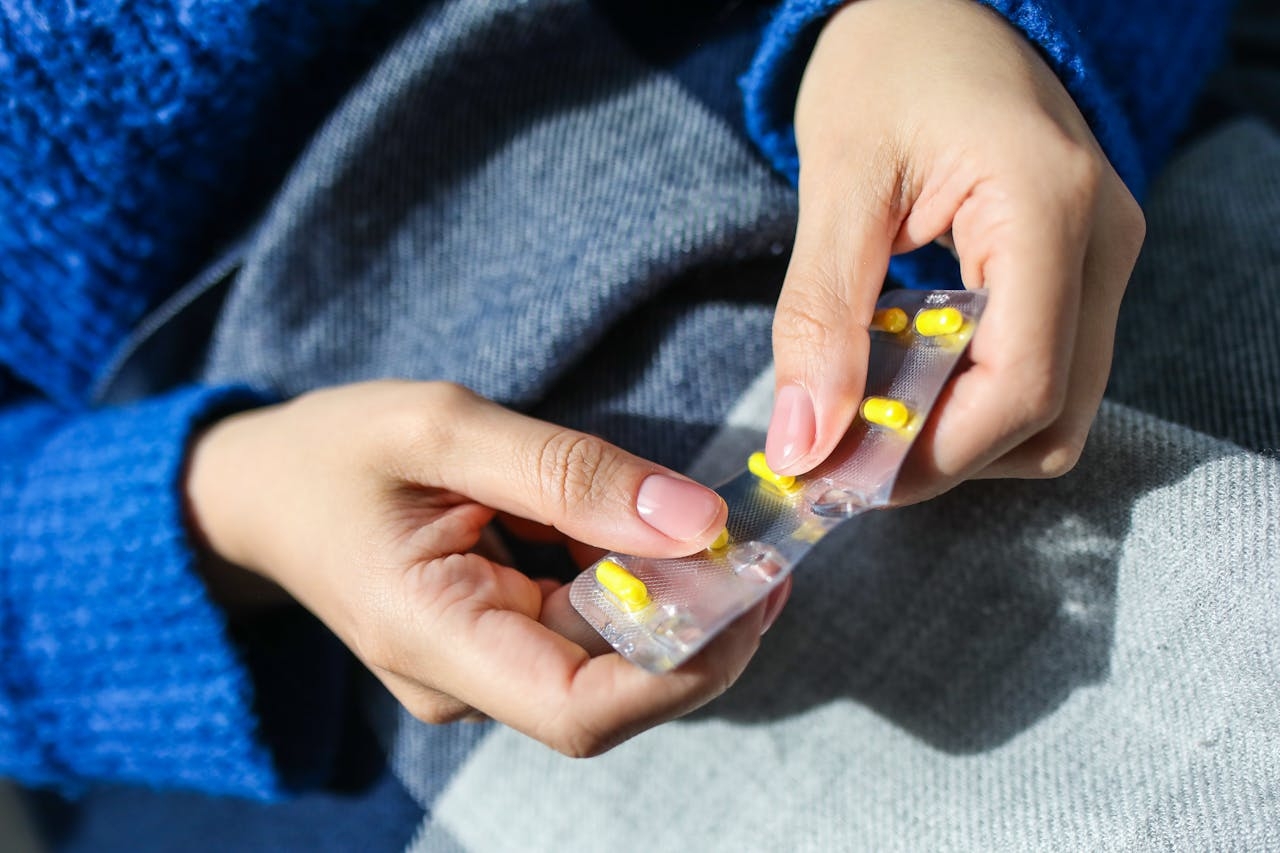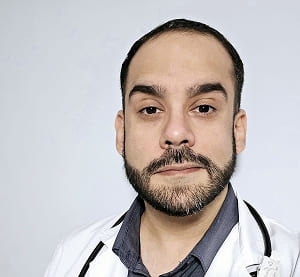
Revestive 5 mg polvo y disolvente para solucion inyectable

Como usar Revestive 5 mg polvo y disolvente para solucion inyectable
Introduction
Patient Information Leaflet
Revestive 5 mg powder and solvent for solution for injection
teduglutida
This medicine is subject to additional monitoring, which will speed up the detection of new information about its safety. You can contribute by reporting any adverse effects you may experience. The final part of section 4 includes information on how to report these adverse effects.
Read the entire patient information leaflet carefully before starting to use this medicine, as it contains important information for you.
- Keep this leaflet, as you may need to refer to it again.
- If you have any questions, consult your doctor, pharmacist or nurse.
-This medicine has been prescribed for you only, and you must not give it to others even if they have the same symptoms as you, as it may harm them.
- If you experience any adverse effects, consult your doctor, pharmacist or nurse, even if they are not listed in this leaflet. See section 4.
1. What Revestive is and for what it is used
2. What you need to know before starting to use Revestive
3. How to use Revestive
4. Possible adverse effects
5. Storage of Revestive
6. Contents of the pack and additional information
1. What is Revestive and how is it used
Revestive contains the active ingredient teduglutida. It improves the intestinal absorption of nutrients and liquids from your gastrointestinal tract (intestine).
Revestive is used for the treatment of short bowel syndrome in adults, children, and adolescents (4 months and older). Short bowel syndrome is a disorder that occurs due to an inability to absorb nutrients from food and water in the intestine. It is generally caused by partial or total surgical removal of the small intestine.
2. What you need to know before starting to use Revestive
Do not use Revestive
- If you are allergic to teduglutida or any of the other components of this medicine (listed in section 6) or to traces of tetracycline residues;
- If you have or think you may have cancer;
- If you have had cancer in any part of the gastrointestinal tract, such as the liver, gallbladderor the bile ducts and pancreas, in the last five years.
Warnings and precautions
Consult your doctor before starting to use Revestive:
-If you have severe liver failure. Your doctor will take this into account when prescribing this medicine;
-If you have any cardiovascular disease (affecting the heart and/or blood vessels), such as high blood pressure (hypertension) or heart failure. Symptoms and signs include sudden weight gain, facial swelling, swelling in the ankles and/or difficulty breathing;
-If you have other severe diseases that are not well controlled. Your doctor will take this into account when prescribing this medicine;
-If you have kidney failure. Your doctor may need to give you a lower dose of this medicine.
Your doctor may adjust the amount of fluids or intravenous nutrition you receive while starting or while receiving treatment with Revestive.
Medical reviews before and during treatment with Revestive
Before starting treatment with this medicine, your doctor will need to perform a colonoscopy (a procedure to observe the inside of the colon and rectum) to detect the presence of polyps (small abnormal growths) and remove them. It is recommended that your doctor perform these examinations once a year for the first two years after starting treatment and then, at least, once every five years. If polyps are found before or during treatment with Revestive, your doctor will decide whether you should continue using this medicine. If cancer is diagnosed during the colonoscopy, do not use Revestive. Your doctor will monitor your electrolytes and body fluids as an imbalance could cause fluid overload or dehydration.
Your doctor will pay special attention and monitor the function of your small intestine and signs and symptoms indicating problems in your gallbladder, bile ducts, and pancreas.
Children and adolescents
Medical reviews before and during treatment with Revestive
Before starting treatment with this medicine, a test will be performed to see if there is blood in the stool. A colonoscopy (a procedure to observe the inside of the colon and rectum to detect the presence of polyps [small abnormal growths] and remove them) will also be performed if there is unexplained blood in the stool. If polyps are found before treatment with Revestive, your doctor will decide whether you should use this medicine. If cancer is diagnosed during the colonoscopy, do not use Revestive. Your doctor will perform more colonoscopies while you continue receiving treatment with Revestive. Your doctor will monitor your electrolytes and body fluids as an imbalance could cause fluid overload or dehydration.
Children under 4 months of age
This medicine should not be used in children under 4 months of age. There are no data available for Revestive in this age group.
Other medicines and Revestive
Inform your doctor, pharmacist, or nurse if you are using, have used recently, or may need to use any other medicine.
Revestive may affect how other medicines are absorbed in the intestine and, therefore, reduce their effectiveness. Your doctor may need to change the dose of other medicines.
Pregnancy and breastfeeding
Revestive is not recommended for use if you are pregnant or breastfeeding.
If you are pregnant or breastfeeding, or think you may be pregnant, or plan to become pregnant, consult your doctor, pharmacist, or nurse before using this medicine.
Driving and operating machines
This medicine may cause dizziness. If this happens, do not drive or operate machines until you feel better.
Important information about some components of Revestive
This medicine contains less than 23 mg of sodium (1 mmol) per dose; this is essentially “sodium-free”.
Be cautious if you are hypersensitive to tetracyclines (see the “Do not use Revestive” section).
3. How to Use Revestive
Follow exactly the administration instructions for this medication as indicated by your doctor. If in doubt, consult your doctor, pharmacist, or nurse again.
Dose
The recommended daily dose is 0.05 mg per kilogram of body weight. The dose will be given in milliliters (ml) of solution.
Your doctor will decide on the most suitable dose for you based on your body weight. Your doctor will instruct you on the dose to inject. If in doubt, consult your doctor, pharmacist, or nurse again.
Use in children and adolescents
Revestive can be used in children and adolescents (4 months or older). Follow exactly the administration instructions for this medication as indicated by your doctor.
How to Use Revestive
Revestive is injected under the skin (subcutaneously) once a day. The injection can be administered by the patient themselves or another person, for example, your doctor, caregiver, or home nurse. If you are injecting the medication yourself, or having it injected by your caregiver, both you and your caregiver must receive proper training from your doctor or nurse. You will find detailed injection instructions at the end of this leaflet.
We strongly recommend that each time you or your child receive a dose of Revestive, you record the name and batch number of the medication in order to maintain a record of the batches used.
If you use more Revestive than you should
If, by accident, you inject more Revestive than indicated by your doctor, you must contact your doctor, pharmacist, or nurse.
If you forget to use Revestive
If you forget to use this medication (or cannot use it at your usual time), use it as soon as possible that same day. Never use more than one injection on the same day. Do not use a double dose to compensate for missed doses.
If you interrupt treatment with Revestive
Continue using this medication for the time indicated by your doctor. Do not stop using this medication without consulting your doctor, as sudden interruption may cause changes in fluid balance.
If you have any other questions about the use of this medication, ask your doctor, pharmacist, or nurse.
4. Possible Adverse Effects
Like all medicines, this medicine may cause side effects, although not everyone will experience them.
Seek immediate medical attention if any of the following side effects occur:
Common(may affect up to 1 in 10 people):
-Heart failure. Contact your doctor if you experience fatigue, difficulty breathing, or swelling of the ankles, legs, or face.
-Pancreatitis (inflammation of the pancreas). Contact your doctor or emergency services if you experience severe stomach pain and fever.
-Intestinal obstruction (intestinal blockage). Contact your doctor or emergency services if you experience severe stomach pain, vomiting, and constipation.
- Reduced bile flow from the gallbladder and/or inflammation of the gallbladder.
Contact your doctor or emergency services if you experience yellowing of the skin and the white part of the eyes, itching, dark urine, and light-colored stools, or if you experience pain in the upper right side or the middle of the stomach area.
Uncommon(may affect up to 1 in 100 people):
-Fainting. If your heart rate and breathing are normal and you wake up quickly, inform your doctor. In other cases, seek assistance as soon as possible.
Other side effects included:
Very common(may affect more than 1 in 10 people):
- Respiratory tract infection (any infection in the nasal passages, throat, airways, or lungs).
- Headache.
- Stomach pain, stomach swelling, feeling of dizziness (nausea), inflammation of the stoma (artificial opening for waste elimination), vomiting.
- Redness, pain, or inflammation at the injection site.
Common(may affect up to 1 in 10 people):
- Flu or flu-like symptoms.
- Loss of appetite.
- Swelling of hands and/or feet.
- Difficulty sleeping, anxiety.
- Cough, difficulty breathing.
- Polyps (growth of small abnormal masses) in the large intestine.
- Gas (flatulence).
- Narrowing or blockage of the pancreatic duct, which may cause pancreatitis.
- Inflammation of the gallbladder.
Uncommon(may affect up to 1 in 100 people):
- Polyps (growth of small abnormal masses) in the small intestine.
Frequency not known(cannot be estimated from available data):
- Allergic reaction (hypersensitivity).
- Fluid retention.
- Polyps (growth of small abnormal masses) in the stomach.
Use in children and adolescents
In general, side effects in children and adolescents are similar to those observed in adults.
No data are available for children under 4 months of age.
Reporting of side effects
If you experience any type of side effect, consult your doctor or pharmacist, even if it is a possible side effect that does not appear in this leaflet. You can also report them directly through the national notification system included in the Appendix V.By reporting side effects, you can contribute to providing more information on the safety of this medicine.
5. Reconstitution and Storage
Keep this medication out of the reach and sight of children.
Do not use this medication after the expiration date that appears on the box, vial, and pre-filled syringe after CAD. The expiration date is the last day of the month indicated.
Store below 25°C.
Do not freeze.
After reconstitution, from a microbiological point of view, the solution must be used immediately. Nevertheless, chemical and physical stability has been demonstrated for 3 hours at 25°C.
Do not use this medication if you observe that the solution is cloudy or contains particles.
Medications should not be disposed of through drains or in the trash. Ask your pharmacist how to dispose of the containers and medications that you no longer need. In this way, you will help protect the environment. All needles and syringes must be disposed of in sharp object containers.
6. Contents of the packaging and additional information
Composition of Revestive
- The active ingredient is teduglutide. A vial of powder contains 5 mg of teduglutide. After reconstitution, each vial contains 5 mg of teduglutide in 0.5 ml of solution, corresponding to a concentration of 10 mg/ml.
- The other components are L-histidine, mannitol, sodium phosphate monohydrate, and disodium phosphate heptahydrate, sodium hydroxide (pH adjustment), and hydrochloric acid (pH adjustment).
- The solvent contains water for injection.
Appearance of the product and contents of the package
Revestive is a powder and a solvent for injectable solution (5 mg of teduglutide in vial, 0.5 ml of solvent in pre-loaded syringe).
The powder is white and the solvent is transparent and colorless.
Revestive is available in package sizes of 1 vial of powder with 1 pre-loaded syringe or 28 vials of powder with 28 pre-loaded syringes.
Only some package sizes may be commercially available.
Marketing authorization holder and manufacturer
Takeda Pharmaceuticals International AG Ireland Branch
Block 2 Miesian Plaza
50 – 58 Baggot Street Lower
Dublin 2, D02 HW68
Ireland
Last revision date of this leaflet: 06/2023
The detailed information on this medicine is available on the website of the European Medicines Agency:http://www.ema.europa.eu.There are also links to other websites on rare diseases and orphan medicines.
Instructions for preparation and injection of Revestive
Important information:
- Read the leaflet before using Revestive.
- Revestive is injected subcutaneously.
- Do not inject Revestive intravenously or intramuscularly.
- Keep Revestive out of the sight and reach of children.
- Do not use Revestive after the expiry date that appears on the box, vial, and pre-loaded syringe. The expiry date is the last day of the month indicated.
- Store below 25°C.
- Do not freeze.
- After reconstitution, the solution should be used immediately. However, chemical and physical stability has been demonstrated for up to 3 hours at 25°C.
- Do not use Revestive if the solution is cloudy or contains particles.
- Medicines should not be disposed of by flushing down the toilet or throwing them away. Ask your pharmacist how to dispose of the packaging and unused medicines. This will help protect the environment.
- Dispose of all needles and syringes in a puncture-proof container.
Materials included in the package:
- 1 or 28 vials with 5 mg of teduglutide in powder form.
- 1 or 28 pre-loaded syringes with solvent.
Materials necessary but not included in the package:
- Needles for reconstitution (22G, 1½" [0.7 x 40 mm] long).
- Syringes for injection of 0.5 ml or 1 ml (with scale intervals of 0.02 ml or less). For children, a syringe for injection of 0.5 ml (or smaller) may be used.
- Thin needles for subcutaneous injection (e.g., 26G, 5/8" [0.45 x 16 mm] long or smaller needles for children, if necessary).
- Alcohol-soaked cotton balls.
- Alcohol-soaked cotton swabs.
- Puncture-proof container for disposing of used syringes and needles.
NOTE:Before starting, wash your hands and ensure you have a clean surface to handle the materials before proceeding.
1. Mount the pre-loaded syringe
Once you have prepared all the materials, you must mount the pre-loaded syringe. The following procedure should be followed:
1.1Take the pre-loaded syringe with the solvent and remove the top plastic cap from the pre-loaded syringe so that you can place the reconstitution needle. | |
1.2Attach the reconstitution needle (22G 1½" [0.7 x 40 mm]) to the pre-loaded syringe already mounted by screwing it in a clockwise direction. |
2. Dissolve the powder
You can now dissolve the powder with the solvent.
2.1Remove the green cap from the powder vial, clean the top with an alcohol-soaked cotton ball, and let it dry. Do not touch the top of the vial. | |
2.2Remove the cap from the reconstitution needle of the pre-loaded syringe already mounted with the solvent, without touching the needle tip. | |
2.3Take the powder vial and insert the reconstitution needle attached to the pre-loaded syringe already mounted through the center of the rubber stopper; then, press the plunger gently until the bottom, to inject all the solvent content into the vial. | |
2.4Leave the reconstitution needle and the empty pre-loaded syringe in the vial. Leave the content to rest for approximately 30 seconds. | |
2.5Roll the vial gently between your palms for about 15 seconds. Then, invert the vial carefully once, with the reconstitution needle and the empty pre-loaded syringe still in the vial. |
NOTE:Do not shake the vial. Shaking the vial may produce foam, making it difficult to extract the solution from the vial.
2.6Leave the vial content to rest for about 2 minutes. |
2.7 Check if the vial contains undissolved powder. If there is still undissolved powder, repeat steps 2.5 and 2.6. Do not shake the vial. If there is still undissolved powder, discard the vial and repeat the procedure from the beginning with a new vial.
NOTE:The final solution must be transparent. If the solution is cloudy or contains particles, it should not be injected.
NOTE:Once prepared, the solution should be used immediately. It should be stored below 25°C for a maximum of 3 hours.
3. Prepare the injection syringe
3.1Remove the reconstitution needle from the vial and discard the reconstitution needle. | |
3.2Take the injection syringe and attach it to the reconstitution needle that is still in the vial. | |
3.3Invert the vial, so that it is upside down, slide the needle tip close to the stopper, and gently pull the plunger to fill the syringe with the medicine. |
NOTE:If your doctor has told you that you need two vials, prepare a second pre-loaded syringe with solvent and a second powder vial, just like steps 1 and 2. With the same syringe that you just used, extract the solution from the second vial by repeating step 3.
3.4Remove the injection syringe from the reconstitution needle, leaving the needle in the vial. Dispose of the vial and needle in a puncture-proof container. | |
3.5Take the injection needle, but do not remove the plastic cap from the needle. Attach the needle to the injection syringe that contains the medicine. | |
3.6Check if there are any air bubbles. If there are, gently tap the syringe with your finger until the bubbles rise to the surface. Then, press the plunger to expel the air bubbles. | |
3.7Your doctor has calculated your dose in ml. Expel the excess volume of the syringe with the needle cap on until you reach your dose volume. |
4. Inject the solution
4.1Locate an area of your abdomen where it will be easy to administer an injection, or your thigh if you have pain or hardness in your abdomen (see diagram). |
NOTE:Do not always inject in the same area, change the area (use the upper, lower, left, or right part of your abdomen) to avoid discomfort. Avoid inflamed, swollen, scarred, or covered areas by a mole, birthmark, or any type of injury.
4.2Once you have chosen the injection site, clean the area with an alcohol-soaked cotton swab by moving in a circular motion from the inside out. Let the area dry. | |
4.3Remove the plastic cap from the needle that you have prepared for injection. Hold the skin clean of the injection site with one hand. With the other, hold the syringe as if it were a pencil. Flex your wrist backward and insert the needle at an angle of 45°. |
4.4 Gently pull the plunger. If you see blood in the syringe, remove the needle and replace it with a new and clean one of the same size. You can still use the medicine that is in the syringe. Try to choose another injection site on the same area of clean skin.
4.5 Inject the medicine slowly, pressing the plunger continuously, until you have injected all the medicine and the syringe is empty.
4.6 Quickly remove the needle from the skin and dispose of the needle and syringe in a puncture-proof container. It may bleed a little. If necessary, press the injection site gently with an alcohol-soaked cotton swab or a 2x2 gauze until the bleeding stops.
4.7 Dispose of all needles and syringes in a puncture-proof container or a container with thick walls (e.g., a detergent bottle with a lid). You must use a puncture-proof container or a container with thick walls (including the lid and the sides). If you need a puncture-proof container, please consult your doctor.
- País de registo
- Substância ativa
- Requer receita médicaSim
- Fabricante
- ComposiçãoDihidrogenofosfato de sodio monohidrato (0,645 mg mg), Hidrogenofosfato de sodio heptahidrato (3,435 mg mg), Hidroxido de sodio (e 524) (CSP PH 7,4 mg mg), Manitol (e-421) (15 mg mg)
- Esta informação é apenas para referência e não constitui aconselhamento médico. Consulte sempre um médico antes de tomar qualquer medicamento. A Oladoctor não se responsabiliza por decisões médicas baseadas neste conteúdo.
Consulte um médico online sobre o Revestive 5 mg polvo y disolvente para solucion inyectable
Consulte um médico online
Tem perguntas sobre este medicamento ou sintomas? Obtenha orientação de um médico qualificado, de forma prática e segura.














